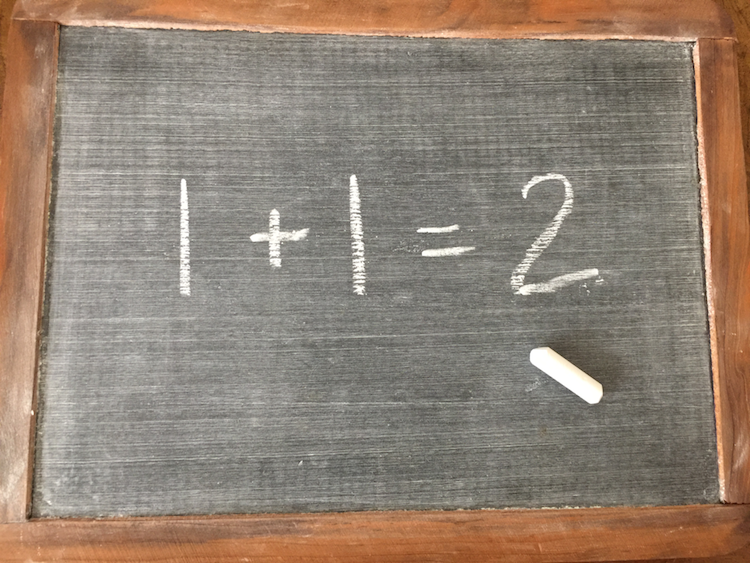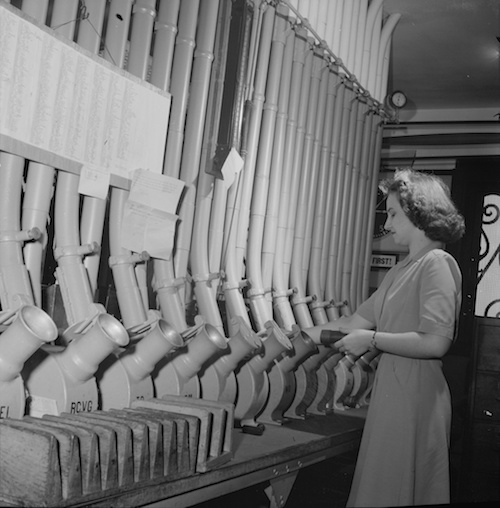Andragogy & Rule Changes


I pressed my boot against the metal frame of the phone booth’s folding door, praying that I could keep it securely closed as I squeezed the receiver to my ear with my shoulder and gripped pepper spray in my right hand and my reporter’s notebook in my left. The scraggly-haired man half a block south looked high on something, and I didn’t want him barging into the booth while I was running my story. I focused hard on the scrawled notes before me, trying to remember the fire chief’s words as he threw the charred space heater through the heat-exploded second floor window of Chicago’s Cabrini Green. The nouns and verbs lined up in my brain in orderly patterns, and by the time I hung up the phone and relaxed my foot, I was confident that I had listed every fact, every nuance, every witness account. I had reported that night’s story the best that I could.
As I settled into my 1981 Honda, ready to drive back to the Englewood Police Department for my next assignment, I heard the words I had just recited to my editor emerging from Chicago’s WGN Radio. I gripped the stick shift and listened somewhat horrified, waiting for the ill-placed pronoun or misconstrued detail. I realized in that moment the importance of the language that swirled in my brain. Without mathematical order, without clarity and simplicity, my readers or listeners – whoever they were – would never see the moments that I had seen.
I was the kid who reveled in the craft of diagramming sentences on the chalkboard in Mrs. Perrin’s sixth-grade class – much to my friends’ annoyance – but my best linguistic training came on the streets of Chicago’s South Side in the early 1990s. When I worked as a crime and news reporter for City News Bureau, a wire service that served as Chicago’s journalism boot camp for more than 100 years, there was no time to ponder prepositions or worry about misplaced modifiers when I was braced in a phone booth at 2:30 a.m. And there was no room for error.
The bureau’s motto was, “If your mother says she loves you, check it out,” and we reporters were trained to think quickly, question thoroughly, and compose efficiently. The publishers of 10 Chicago daily newspapers founded CNB in 1890 to cover police news at night, preventing the regular reporters from wasting their time on false leads. By the 1990s, CNB was a 24-hour crime and news service reporting to dozens of metropolitan and national media outlets, training scores of green journalists with its merciless hard-knocks training. Some of its better-known alumni included Chicago Tribune columnist Mike Royko and novelist Kurt Vonnegut.
Thorough evidence was critical. Seasoned reporters told the story of the CNB rookie who covered a toddler’s death one Christmas morning. The reporter dutifully questioned family members about how and why the toddler had choked on the shards of a glass Christmas tree ball – undoubtedly a wrenching experience for the rookie. When the reporter finished his phone call with some relief and filed his story, his rewrite editor berated him for neglecting one key detail: the color of the Christmas tree ball. The reporter was forced to call the family back, imposing on their grief with a seemingly inconsequential detail. The lesson? Get it right the first time.
Prewriting was also essential. Yes, it’s difficult to prewrite when you have no idea what squawks will emerge from the police scanner, so our assignment was to soak ourselves in news every waking moment: read at least three daily newspapers, two metro and one national, and listen to radio or TV news at every possible moment. My first assignment after I moved to Chicago from the Northwest was to cover a news conference with then-Governor Jim Edgar. My editor told me to simply stay alert and take notes, no questions needed this time, but the veteran reporters from other news agencies spotted my false nonchalance immediately.
As the news conference ended, the press of reporters encircling Edgar pulled back and everyone seemed to look my way at once, smirking condescendingly as one woman asked whether the new City News reporter had any questions for the governor. “Not this time,” I said with false bravado. I had moved to Chicago just one week prior, and I knew nothing about Jim Edgar, Jim Thompson, Alan Dixon, or either of the Rich Daleys. Governor Edgar clapped me on the shoulder before he turned away. “Next time, Champ,” he said. Next time, indeed. I was in the library for hours the next day researching Illinois history and Chicago politics.
The first time I called in a story by payphone, I wasn’t sure what to say. “What do you need first?” I asked the rewrite editor as I stood in the phone booth skimming through my notes. He was not pleased with my question or my inefficiency. “What do you mean?” he screamed into the phone. “Just give me the damn story! This should have gone out minutes ago!” I quickly realized that I didn’t have time to compose in the classic sense of the word composition. Writing had to become second nature if I was going to survive on those streets. I learned to narrow each new event to a single thesis statement as I stood at the scene, and then seek out the exhaustive evidence that would satisfy even the grouchiest of editors. I learned to recite stories rapidly from pages of illegible scribblings, pulling the most important information to the top and letting the superfluous slide away. I learned to set my ego aside as we rushed to move stories with speed and accuracy.
On more than one occasion, I emerged from a phone booth to hear the story I had just called in being read over the radio in my old Accord. It was humbling, to say the least, to hear the words I had just slung together in a race against time read by someone sitting comfortably in a studio. At first, I wanted to shout excuses at the radio: “I was under too much pressure!” “I didn’t have time to think of better verbs!” “The police commander I interviewed wouldn’t speak in complete sentences!” But I later realized that it was more about math than craft at this level. If I could master the simple addition that would satisfy the editor on the other end of the phone, the story would hit the wire and recipients would hear the information they needed to know. When an unidentified man’s body was brought to the city morgue, his skull crushed by the steel wheels of the El train, simple details superseded linguistic craft. When Nike opened its flagship Chicago store on Michigan Avenue, clarity was critical. When a Chicago Police Department violent crimes detective and commander was accused of using torture to elicit confessions, there was no room for error.
After stints at CNB, the Chicago Tribune, Tacoma’s News Tribune, The Oregonian, and several weekly newspapers, I left journalism for academia. I loved the writing, but I struggled with the emotional turmoil of leaping from story to story without time to pause over the humanity of each loss, tragedy, crisis, or quandary. What the leaping taught me, though, was the necessity of simple math: 1 + 1 = 2. When an addend is missing or the sum does not equate, meaning is skewed or lost completely. Our brains are wired for linguistic structure, and our best, most efficient communication happens when that structure is honored. Yes, there is room for creativity beyond the basic structure, but the foundational elements of 1 + 1 = 2 must be accurately in place before we move on to higher levels.
Simple math demands a separation between essential and inessential rules of writing – a line too often muddied by well-meaning English teachers who allow their preferences to color the classroom. An essential rule is this: A complete sentence must include a subject and a verb. An inessential rule is this: Sentences should not be too long. I shuddered some years ago to hear a fellow professor commend a student paper as “wonderfully written, but with a few too many commas.” A comment like that makes me want to visit a math class and compliment an assignment as “wonderfully computed, but with a few too many 2s.” Both commentaries are equally ludicrous, and the former does not acknowledge the magnificent mathematical complexity of the language we use to share life with one another.
I, too, was educated by teachers whose variety of preferences was befuddling: short vs. long sentences, short vs. long paragraphs, short vs. long essays, contractions or no contractions, first person “I” or no first person “I,” etc. In time, those conflicting voices can freeze your fingers over the keyboard, making it difficult to type anything at all without hearing a voice telling you that the choice you are making is incorrect. But if language is mathematical and your math is correct, those noisy voices from the past no longer get a vote. Once you understand the simple math of writing well, the only voice you should hear is your own, pressing you forward to communicate with speed, efficiency, and purpose.
We write now more than ever before in history, and as an English professor, I think it’s magnificent: emails, texts, projects, papers, reviews, summaries, synopses, blogs, posts, reports, articles, lyrics, plans, essays, stories, books. For those of you born before about 1985, would you ever have imagined our newfound ease with the written word? And the stakes couldn’t be higher. While family and friends may forgive us for silly typos, those we don’t know well likely will not. We all shudder when we see an email from the colleague who writes in nine paragraphs what could be simply said in one. How do we learn to adhere to the simple math of language so those we are writing to focus on our content rather than getting sidetracked by linguistic trappings? How do we learn to write what we ourselves would like to read?

For decades, City News Bureau was at the hub of a complex web of more than nine miles of pneumatic tubes spread throughout the city. When reporters called in to report a crime or a news event, rewrite men would type the story lightning-fast and then shoot it through the tubes to recipients all over the metropolitan area. Copy clerks monitored the tubes on the receiving end, watching for breaking news and deciding in a split-second whether to send a reporter out or report a story over the air. The CNB rewrite editors knew that if a story contained errors that sent other reporters to a wrong address or misrepresented a politician, the angry phone calls would start and their jobs could be lost. The price was high, and mistakes were few.
When you write, picture the tube: Who will receive your email, report, or essay? How will they respond when they twist open the capsule, and how can you ensure that your simple math is correct and your meaning is definitive and clear?
